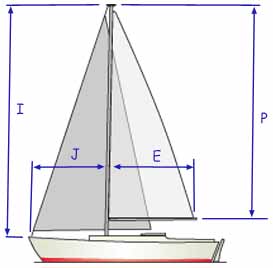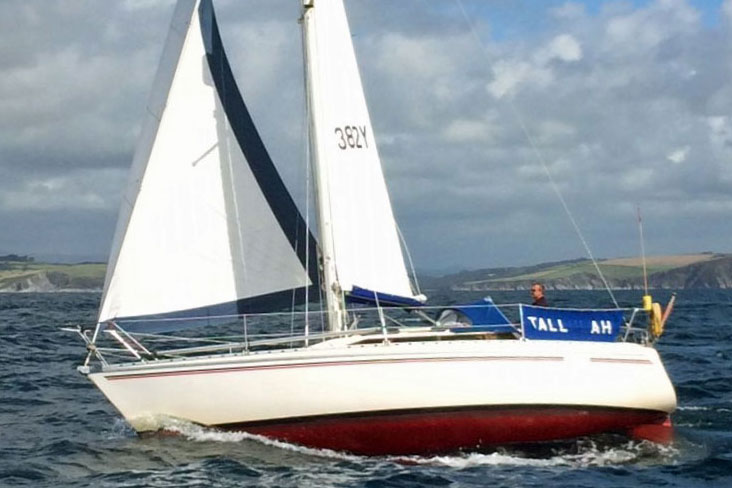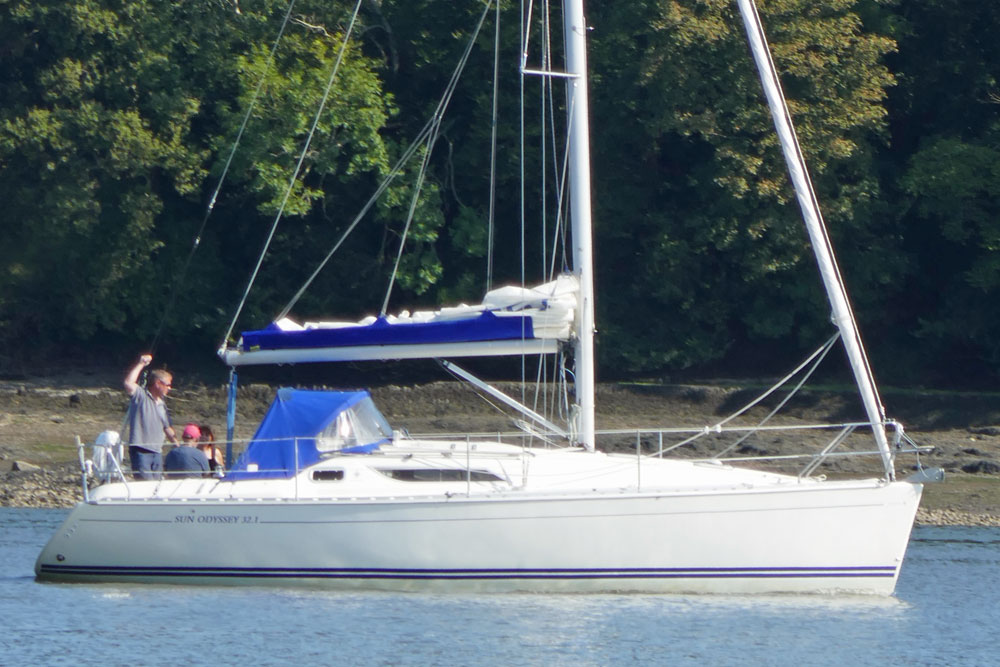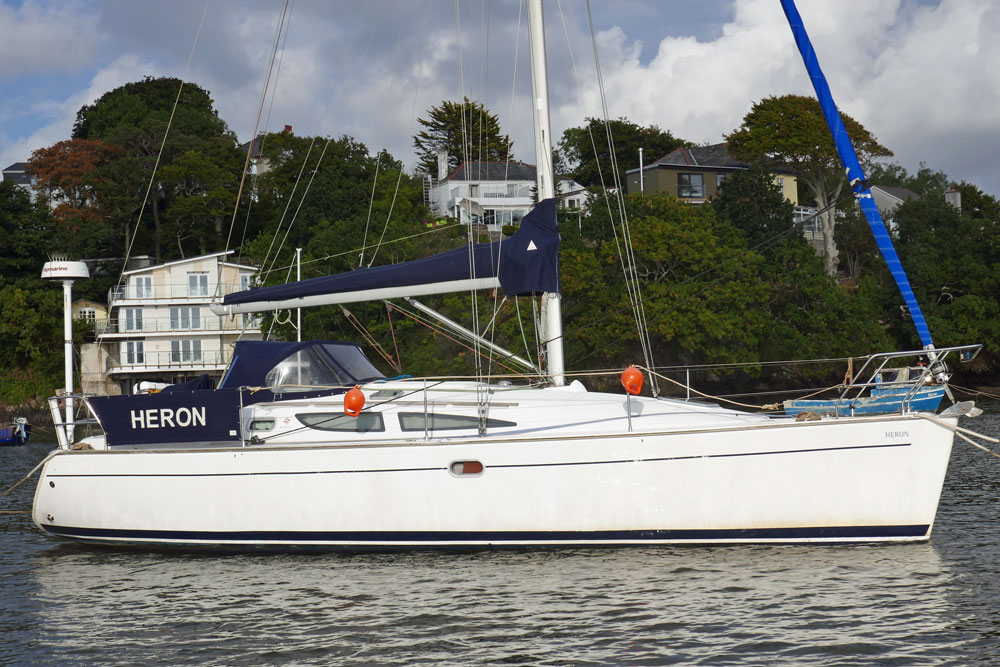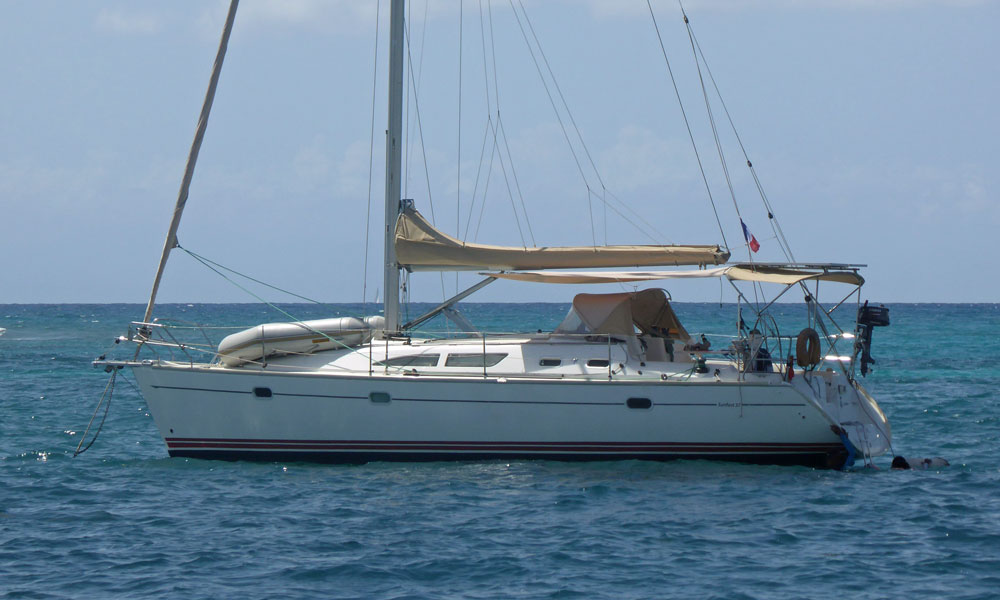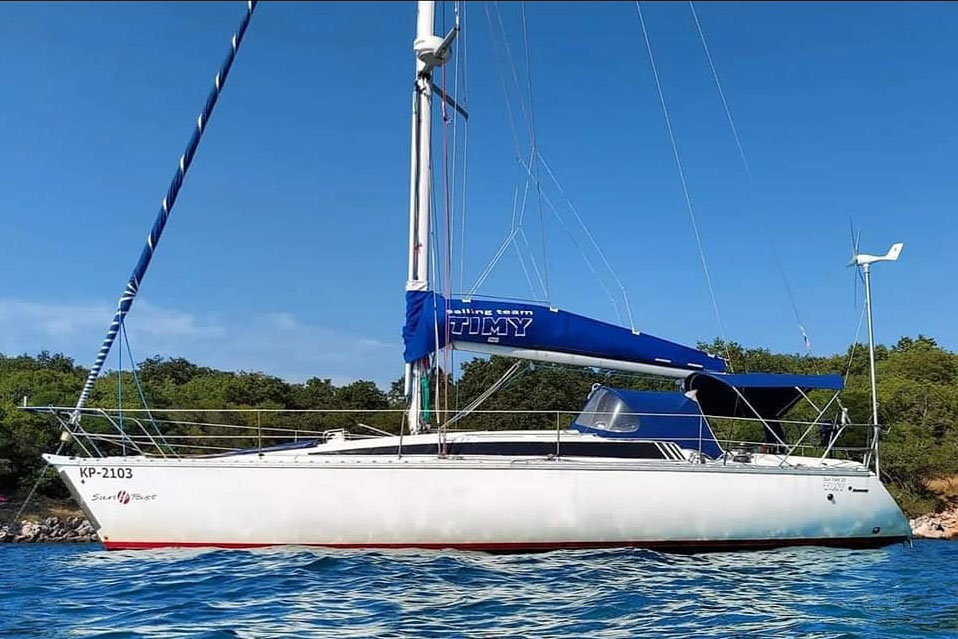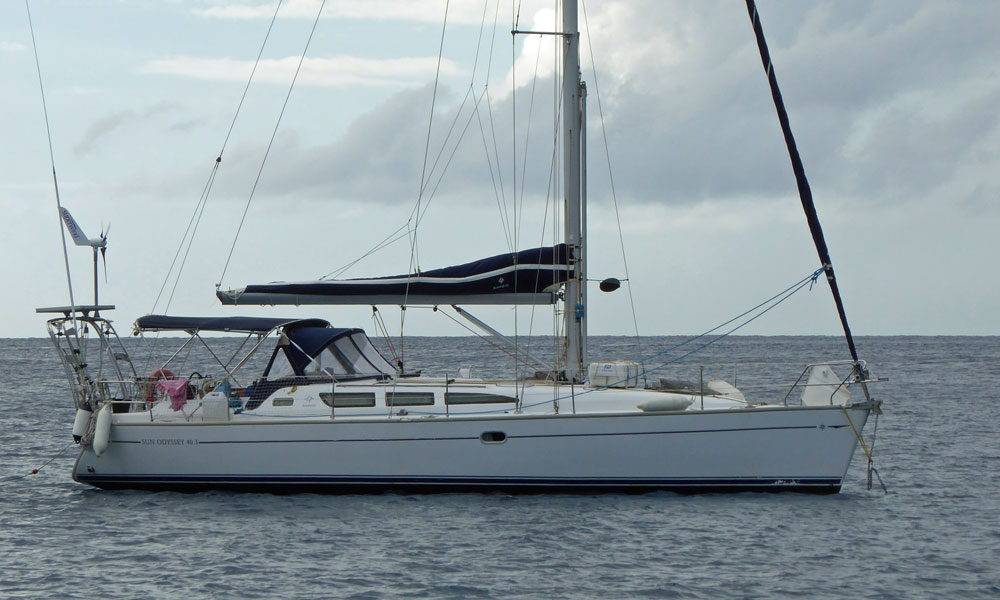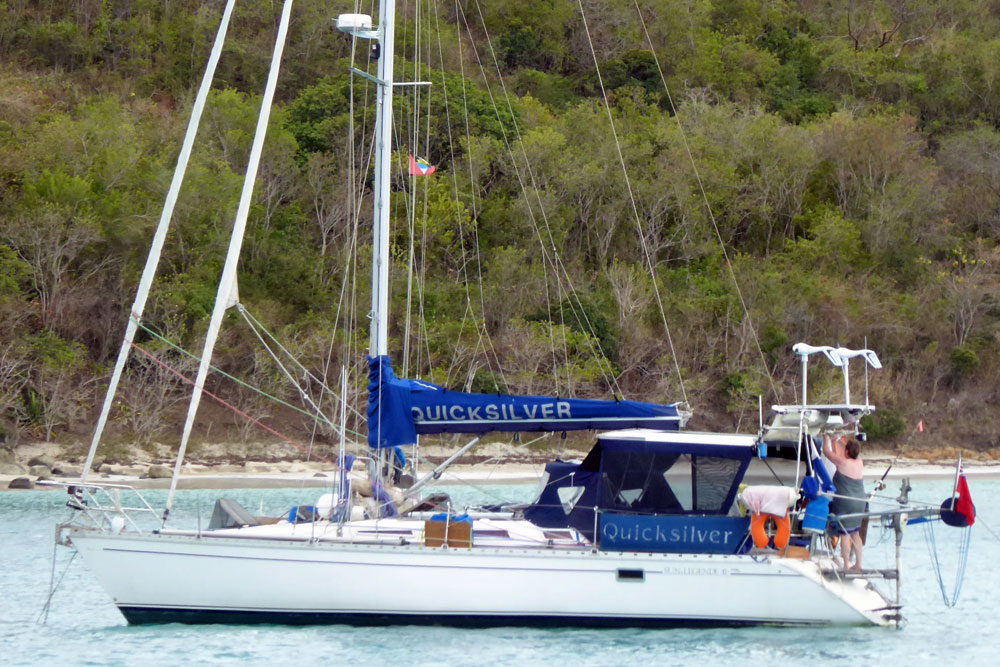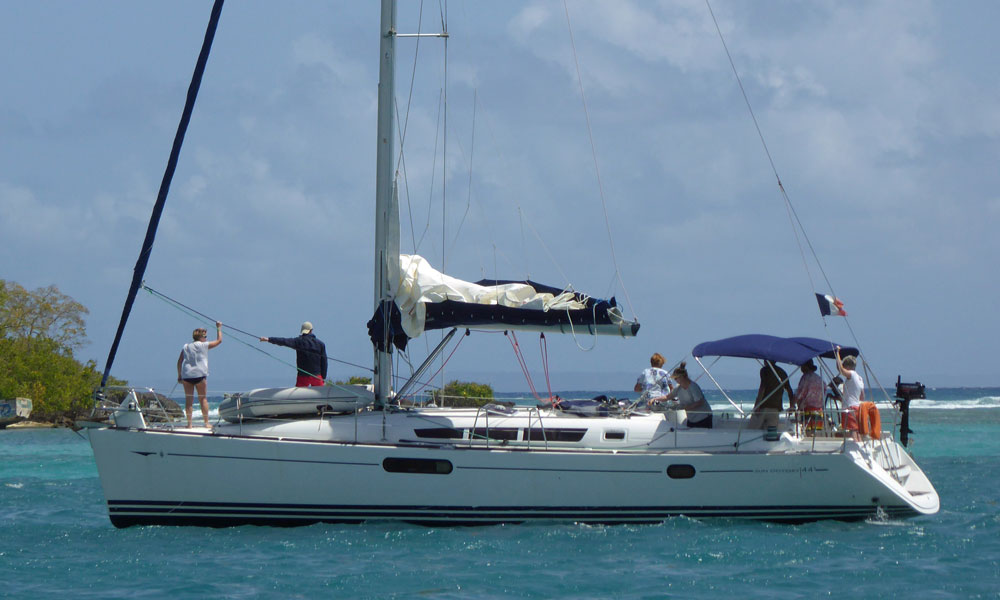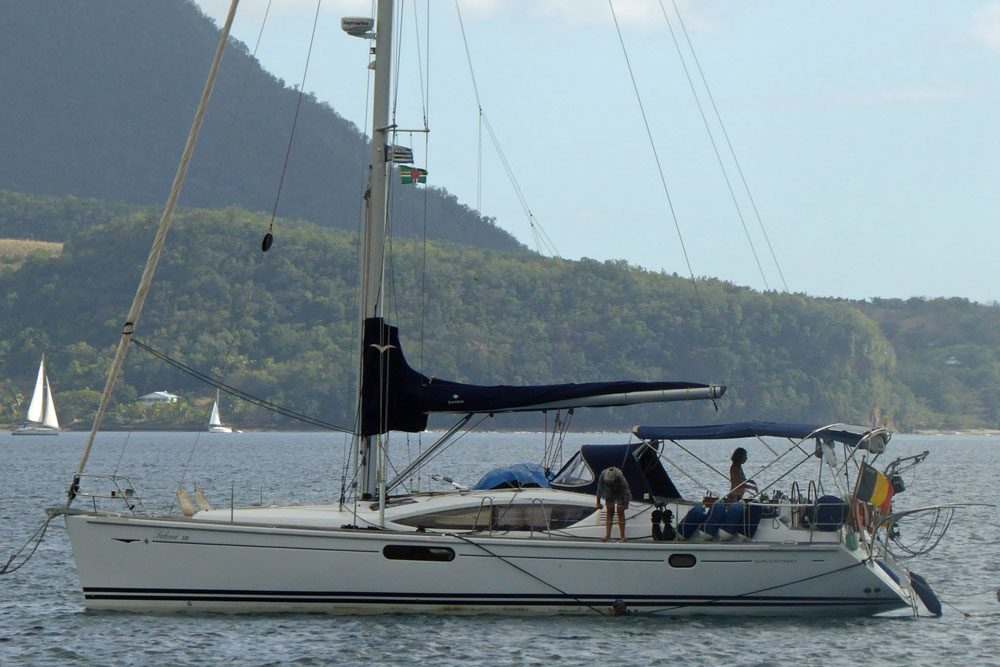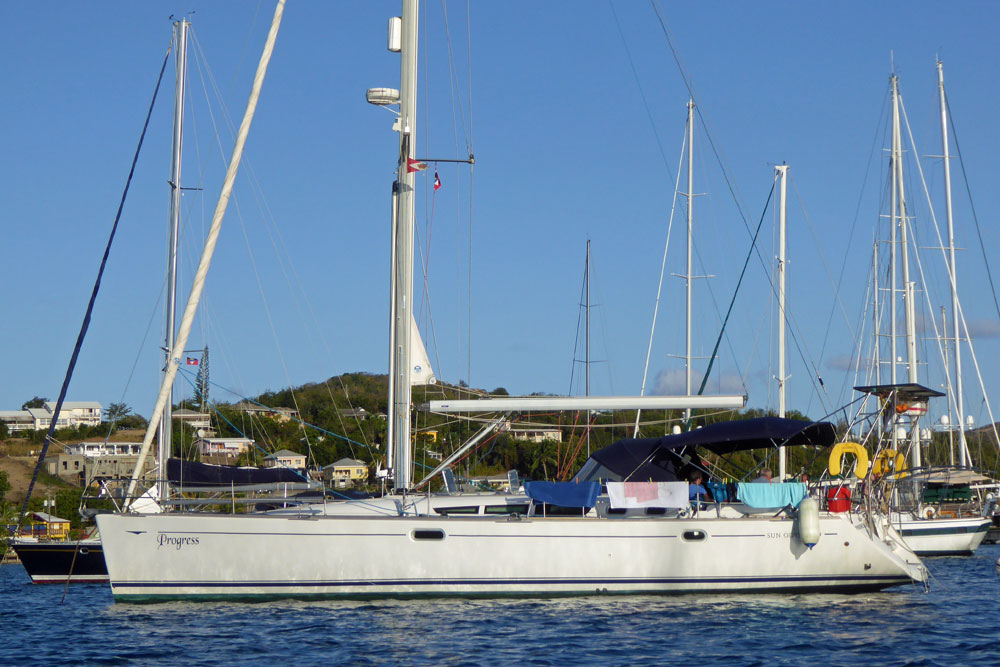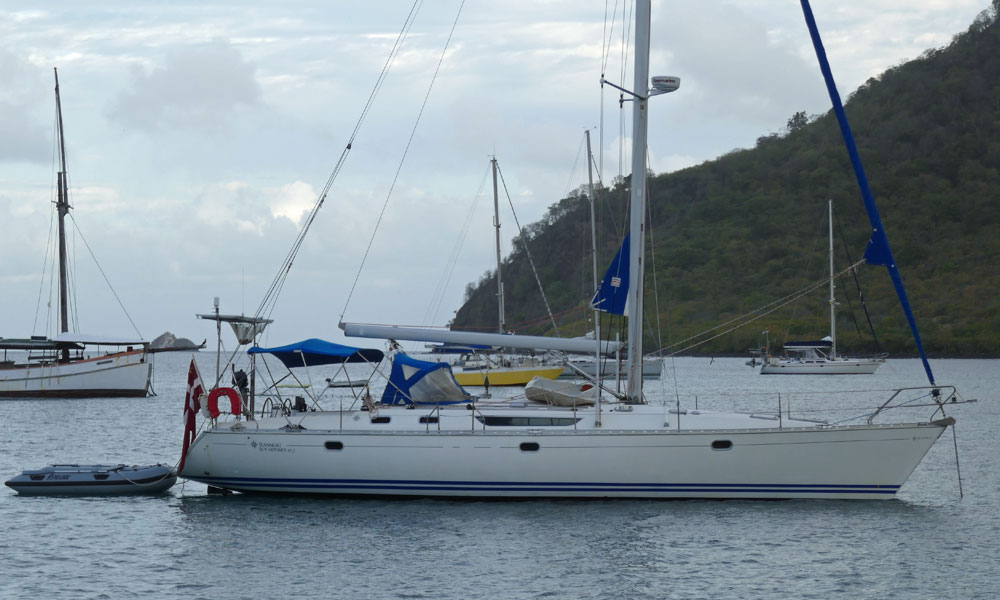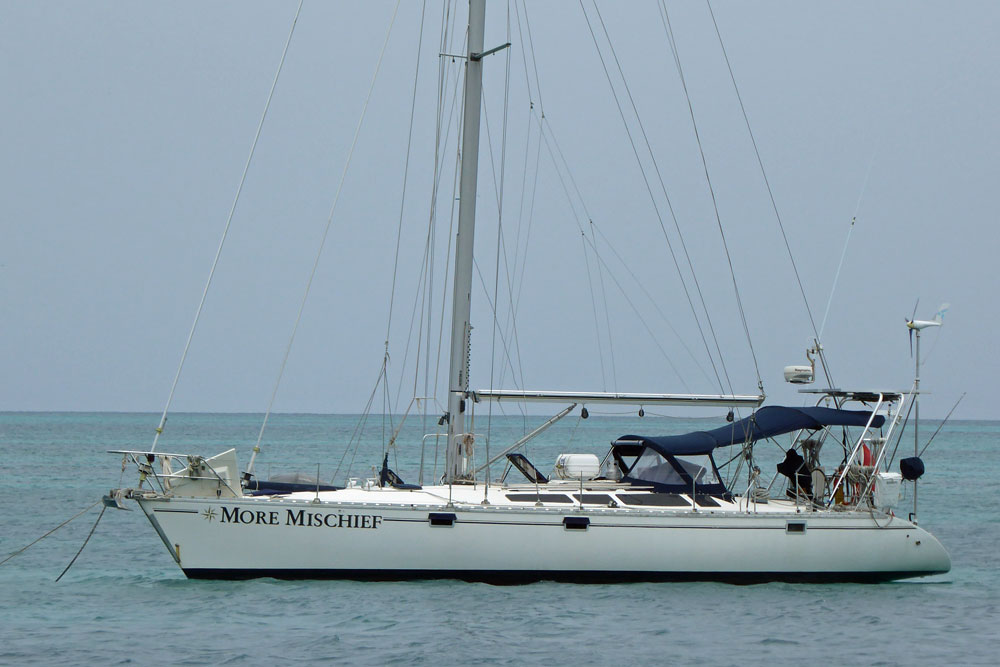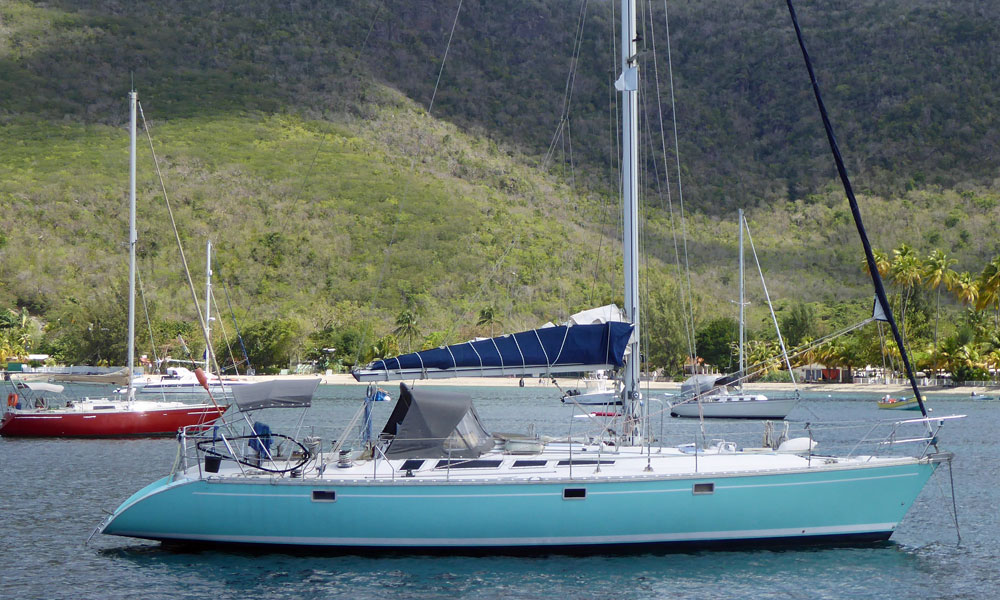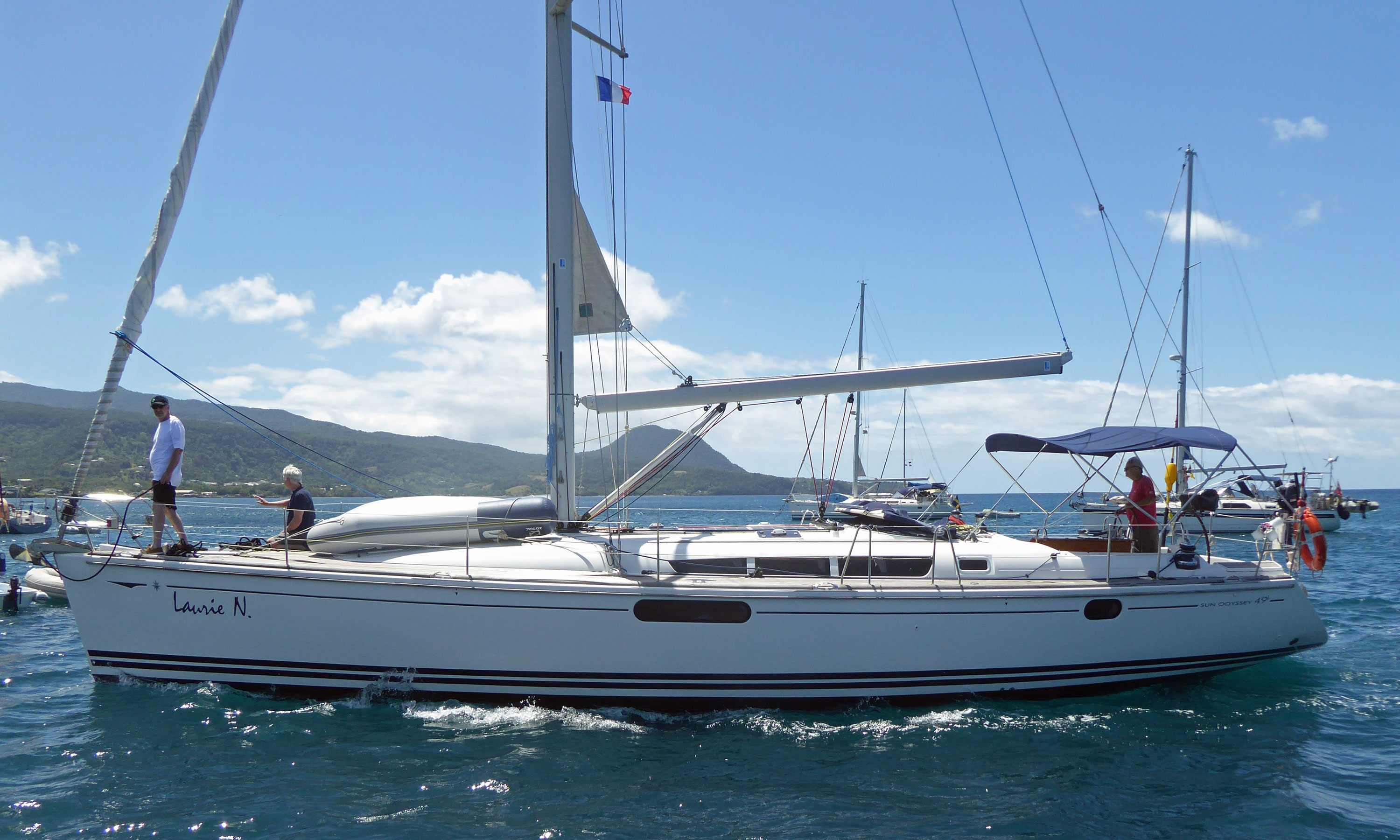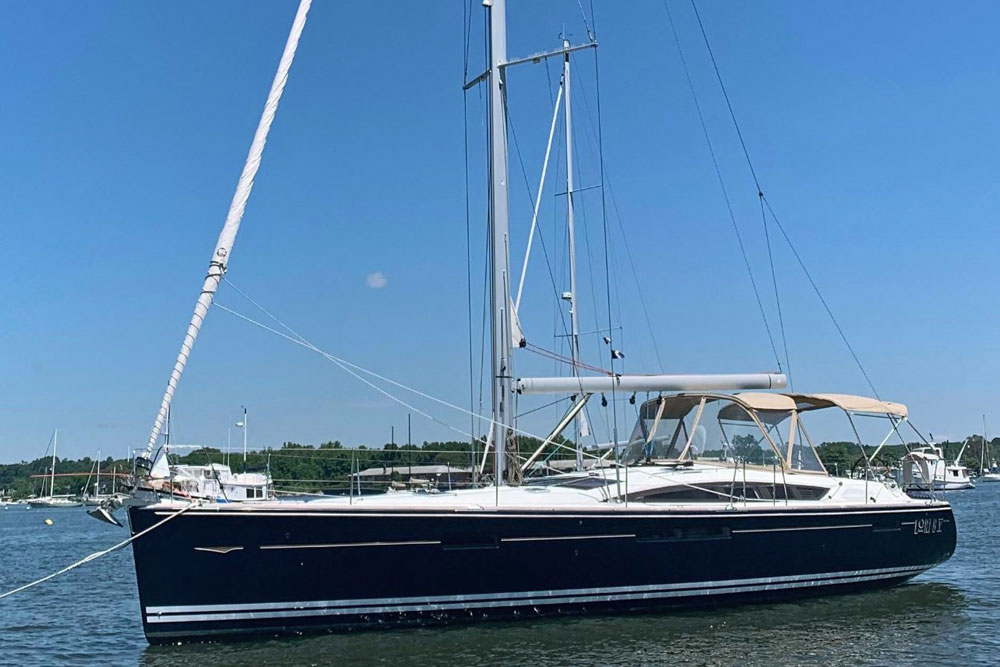- Home
- Cruising Yachts 40' to 45'
- Jeanneau Sun Odyssey 409 Specs
The Jeanneau Sun Odyssey 409
Specs & Key Performance Indicators
The Jeanneau Sun Odyssey 409 sailboat was designed by French naval architect Philippe Briand and produced by Jeanneau, based in Les Herbiers, France.
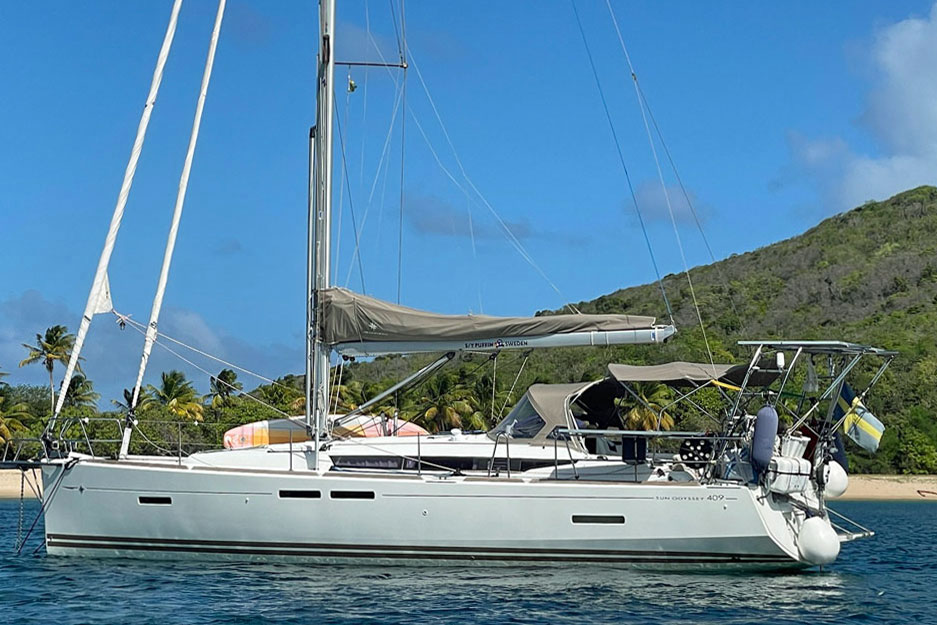 The Jeanneau Sun Odyssey 409 Sloop
The Jeanneau Sun Odyssey 409 SloopPublished Specification for the Jeanneau Sun Odyssey 409
Keel & Rudder Configuration: Bulb-fin keel & spade rudder
Hull Material: GRP (Fibreglass)
Length Overall: 12.34m (40'6")
Waterline Length: 11.0m (36'1")
Beam: 3.99m (13'1")
Draft: 2.1m (6'11")
Rig Type: Fractional Sloop
Displacement: 7,860 kg (17,328 lbs)
Ballast: 2,260 kg (4,982 lbs)
Water Tank Capacity: 330 litres (87.2 gallons)
Fuel Tank Capacity: 200 litres (52.8 gallons)
Hull Speed: 8.05 knots
Designer: Philippe Briand
Builder: Jeanneau
Year First Built: 2010
Year Last Built: 2015
Options & Alternatives
Several alternative versions were available including:
- Keel Options: A standard deep draft keel (2.1m or 6’11") and a shallow draft keel (1.55m or 5’1");
- Interior Layout Options: Multiple interior layout configurations, including options for two or three cabins.
A later version of the Jeanneau Sun Odyssey 409 was produced, known as the Jeanneau Sun Odyssey 419. Introduced in 2015, the Sun Odyssey 419 replaced the 409 model. Essential Differences between the 409 and the 419 are:
- Length Overall: The Sun Odyssey 419 is slightly longer, with an overall length of 12.76m (41'10") compared to the 12.34m (40'6") of the 409.
- Interior Layouts: The 419 offered updated interior layouts with more modern finishes and improved ergonomics.
- Rigging & Sail Plan: The 419 featured a more efficient sail plan and rigging options, enhancing sailing performance.
- Technological Upgrades: The 419 included advancements such as optional solar panels, LED lighting, and more efficient refrigeration systems.
These updates aimed to improve comfort, performance, and energy efficiency, reflecting advancements in sailing technology and design preferences.
Sail Areas & Rig Dimensions
- I: 15.5 m (50'10")
- J: 4.5 m (14'9")
- P: 15.0 m (49'3")
- E: 4.9 m (16'1")
- Mainsail Area: 36.8m² (396 ft²)
- Foresail Area: 35.0m² (377 ft²)
- Total Sail Area: 71.8m² (773 ft²)
Published Design Ratios
The Key Performance Indicators (KPIs)
- Sail Area/Displacement Ratio: 19.2
- Ballast/Displacement Ratio: 30.3
- Displacement/Length Ratio: 156
- Comfort Ratio: 22.1
- Capsize Screening Formula: 2.1
The following analysis of the design ratios gives an indication of the boat's likely sailing characteristics, but see the 'Notes of Caution' below:
- A Sail Area/Displacement Ratio of 19.2 indicates reasonably good performance. The sailboat is not underpowered and should perform well, offering satisfying power-to-weight characteristics for both cruising and some performance sailing.
- A Ballast/Displacement Ratio of 30.3 suggests that the Jeanneau Sun Odyssey 409 has moderate stability. It's not particularly stiff, meaning it won't be able to stand up to the wind as robustly as a boat with a higher ratio, but it still offers a good balance between performance and stability.
- A Displacement/Length Ratio of 156 places the Jeanneau Sun Odyssey 409 in the light displacement category. Light displacement boats are easier to drive to their hull speed with less sail area, making the boat relatively nimble and responsive.
- A Comfort Ratio of 22.1 suggests a somewhat lively motion, which is typical for coastal cruising boats with moderate stability. The boat is expected to be relatively comfortable for coastal cruising but may become a bit lively in rougher seas compared to more heavily ballasted bluewater cruisers.
- A Capsize Screening Formula of 2.1 is slightly over the threshold of 2.0, which is considered suitable for ocean passages. This means the Jeanneau Sun Odyssey 409 is more tailored for coastal cruising rather than extensive bluewater sailing. It's relatively safe but not optimized for the harshest ocean conditions.
Summary: The Jeanneau Sun Odyssey 409 is designed as a versatile coastal cruiser with good performance capabilities. Its light displacement and reasonable sail power offer a responsive and enjoyable sailing experience. While its stability and comfort ratios make it suitable for coastal voyages, its capsize screening value indicates it is not best suited for ocean passages. Overall, it’s a well-balanced cruiser with enough performance for some spirited sailing while being comfortable for family cruising.
Here's how to calculate the KPIs yourself - without having to wrestle with the mathematics...
Design Ratios: Notes of Caution...
- The Sail Area/Displacement Ratio (SA/D): This ratio provides an estimate of the sail power relative to the boat's weight, which can indicate potential speed in various wind conditions. But it doesn't account for the efficiency of the sail plan, the rigging, or the skill of the crew. Real-world performance can vary significantly based on these factors.
- The Ballast/Displacement Ratio (B/D): This ratio gives an idea of the boat's stability and stiffness, which is crucial for handling and safety. But it doesn't consider the distribution of the ballast or the hull shape, both of which can greatly affect stability. A high B/D ratio alone doesn't guarantee a stable boat if the ballast is poorly distributed.
- The Displacement/Length Ratio (D/L): This ratio helps predict the boat's speed potential and its behaviour in different sea conditions. But it doesn't account for the hull design or the boat's overall weight distribution. Two boats with the same D/L ratio can perform very differently if their hull shapes are different.
- The Comfort Ratio (CR): This ratio estimates the boat's motion comfort in a seaway, which is important for long passages. But it doesn't consider the boat's interior layout, which can also affect comfort. Additionally, personal tolerance to motion varies, so a boat that is comfortable for one person might not be for another.
- The Capsize Screening Formula (CSF): This formula assesses the likelihood of a boat capsizing in heavy seas, which is critical for offshore safety. But it doesn't take into account the boat's handling characteristics or the skill of the crew. A boat with a low CSF can still capsize if poorly handled in severe conditions.
General Limitations
- Static Nature: These ratios are static measurements and don't account for dynamic factors like wave action, wind gusts, or crew actions.
- Simplification: They simplify complex interactions into single numbers, which can be misleading. Real-world performance is influenced by a multitude of factors that these ratios can't fully capture.
- Context: The context in which the boat is used (e.g., coastal cruising vs. offshore racing) can greatly affect how these ratios should be interpreted.
In summary, while these ratios provide valuable insights into the theoretical performance characteristics of a sailboat, they should be used as part of a broader assessment that includes practical experience, sea trials, and expert advice.
Other sailboats in the Jeanneau range include:
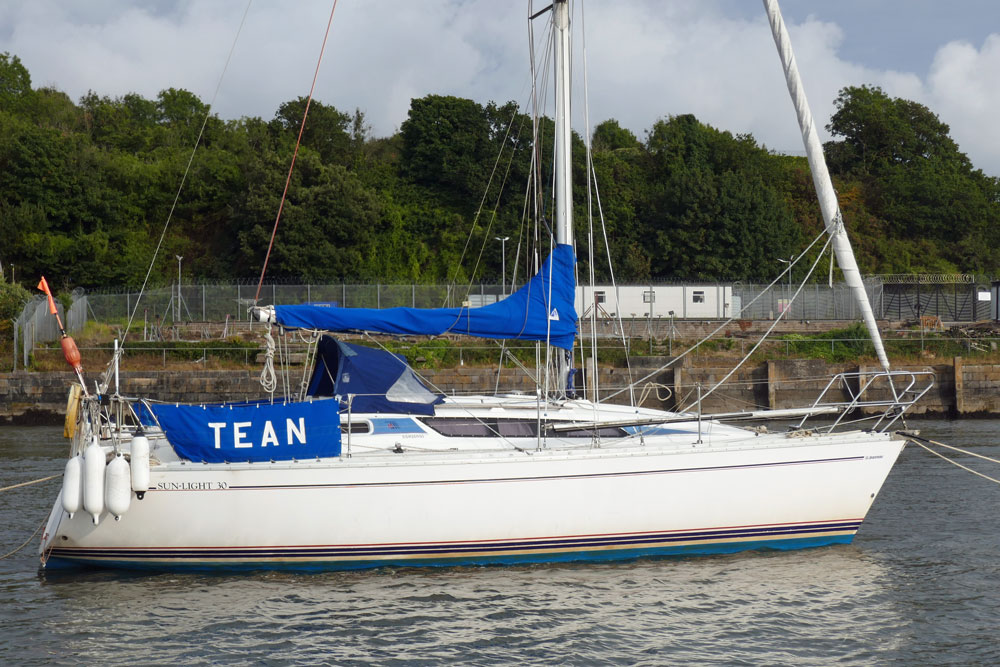 The Jeanneau Sun Light 30
The Jeanneau Sun Light 30 The Jeanneau 'Sun Odyssey' 409
The Jeanneau 'Sun Odyssey' 409The above text was drafted by sailboat-cruising.com using GPT-4 (OpenAI’s large-scale language-generation model) as a research assistant to develop source material; we believe it to be accurate to the best of our knowledge.
Recent Articles
-
Amel Kirk 36 Sailboat Specs & Key Performance Indicators
Sep 07, 24 03:38 PM
The Amel Kirk 36 sailboat specs and KPIs presented here offer valuable insights into its sailing characteristics. Could this be your ideal cruising boat? -
Pearson 33 for sale
Sep 04, 24 03:29 PM
'Stratocruiser', a Pearson 33 MkII sailboat has been well cared for and benefits from a very roomy three-cabin accommodation plan and a good level of inventory. -
Apla 42 Sailboat Specs & Key Performance Indicators
Aug 30, 24 02:51 AM
The Alpa 42 sailboat specs and KPIs set out here say a lot about how this moderate displacement, staysail ketch is likely to behave in a seaway...
